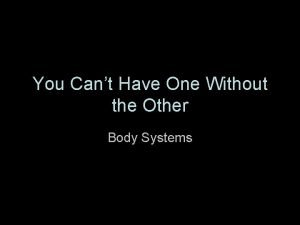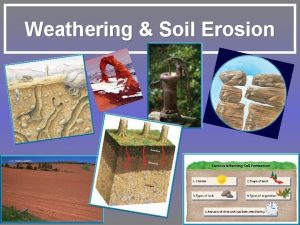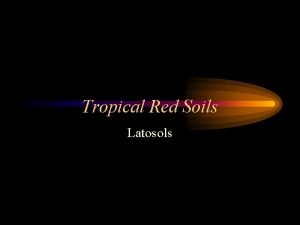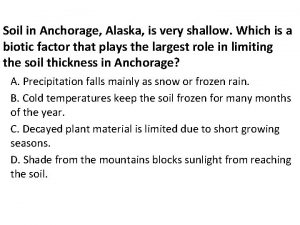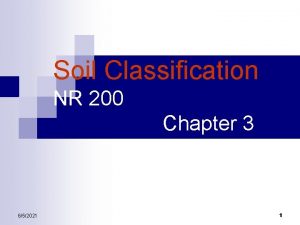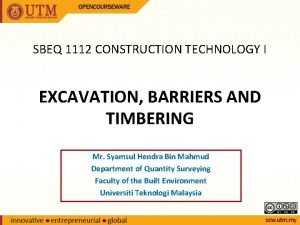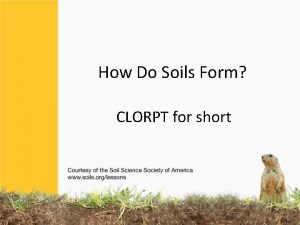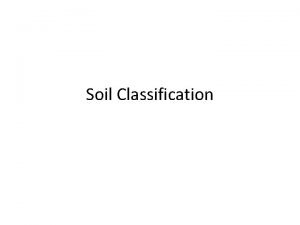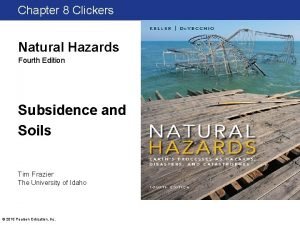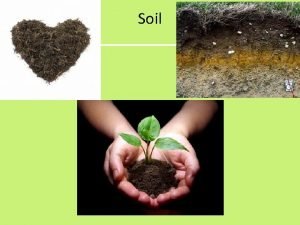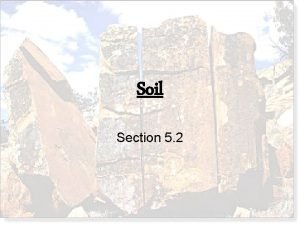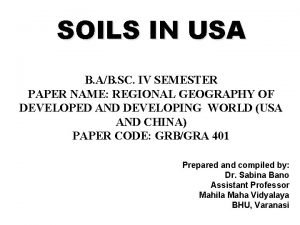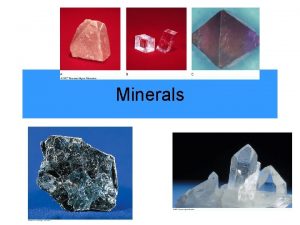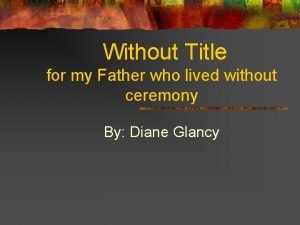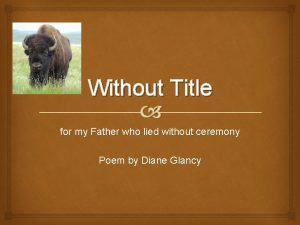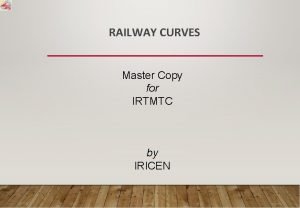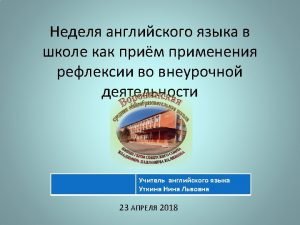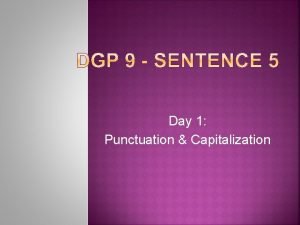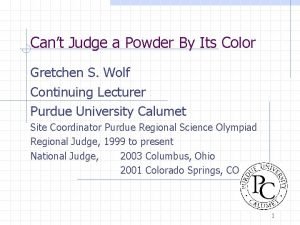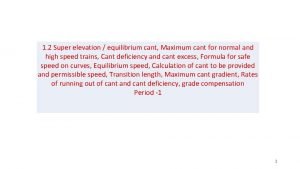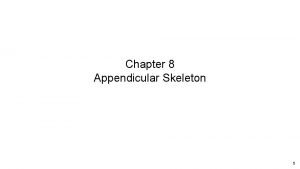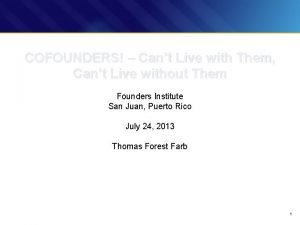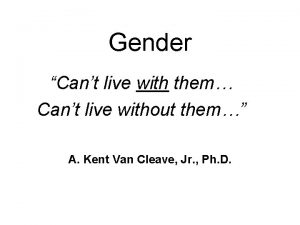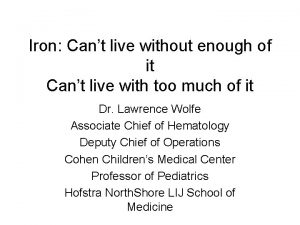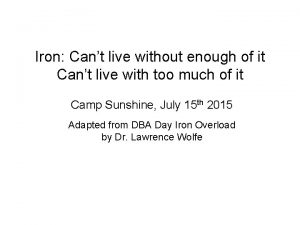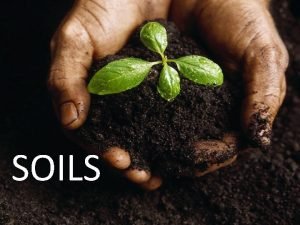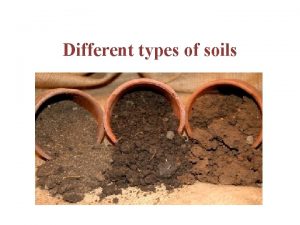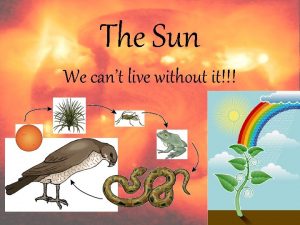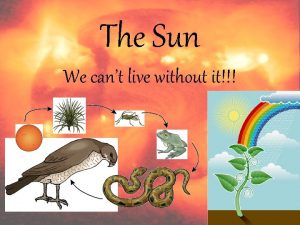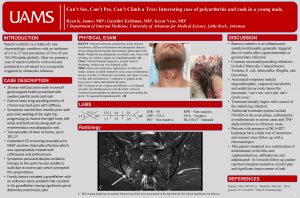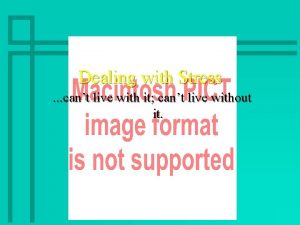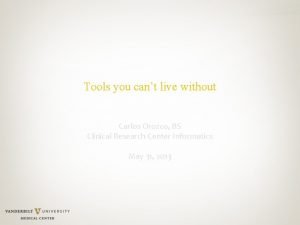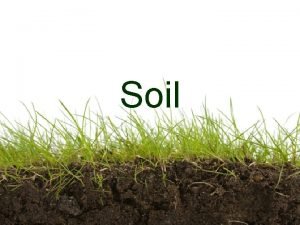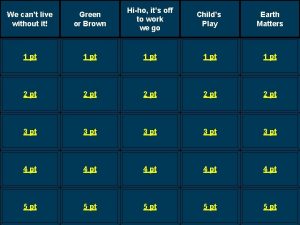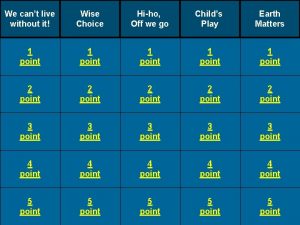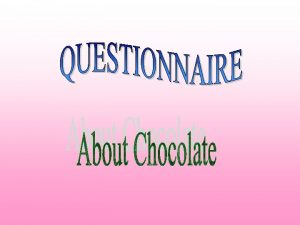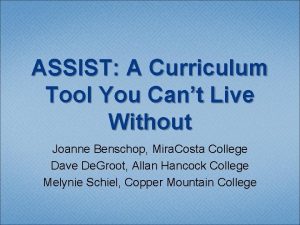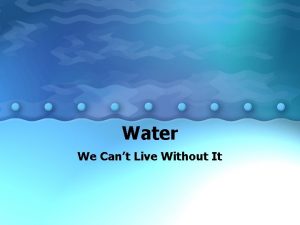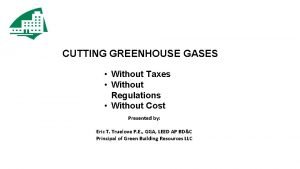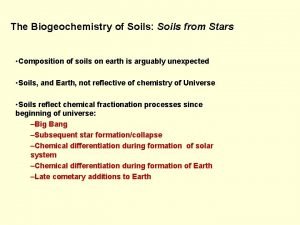Soils We cant live without it All land

































- Slides: 33

Soils

We can’t live without it • All land life depends on it • There isn’t very much good soil available on Earth • Required to grow plants • All animal life on land depends on plants

What is soil?


Where does soil come from? • All soil starts from rock. Rock that has never been worn down is called bedrock. • Rock must weather (break down) into smaller and smaller pieces • Rock can break down in two ways. – Chemical weathering – Physical weathering

Chemical and Mechanical Weathering • http: //www. brainpop. com/science/weather/ weathering/

Weathered Rock • Weathered rock doesn’t stay put, but is usually moved by erosion • Erosion can happen from wind water ice

Erosion • http: //www. brainpop. com/science/earthsys tem/erosion/

Characteristics of Soil (how we can describe soils) • • Color Particle Size Texture Consistency • p. H • Moisture • Temperature

Soil Color Two sources of color in soils • Minerals in the soil: for example. red clay soils have a lot of iron; brown/black soils have manganese…. different minerals have different colors • Mica is dark Quartz is light Hematite is red

Soil Color, continued • The more organic material, the darker the soil. Organic material comes from dead plants and animals. Organic material in soil is called humus. • Humus is THE most important factor in soil color. The more humus, the darker the soil.

Soil Particle Sizes • Sand—smaller than gravel, you can still see it, feels grainy, water flows through easily • Silt—smaller than sand, can’t see individual particles, feels smooth like powder, water has a harder time flowing through • Clay—smaller than silt, feels sticky, water usually doesn’t flow through



Consistency • Soil consistency means how the soil likes to stick together. It depends on the kinds of minerals in the soil and how much water is in the soil • Does it stick together when you squeeze a handful of it? Does it crumble apart? Is it sticky?

Soil p. H • p. H is the way we measure how acid or basic something is • It usually ranges from 0 to 14. 1 is very acidic while 14 is very basic, 7 is neutral like pure water • Acids: lemon juice, orange juice, sodas • Bases: Clorox, ammonia, baking soda

Some plants like acidic soils

Other plants like basic soils • But if soil is too acid or basic, no plants can grow

What does the p. H level do? • p. H of the soil affects how minerals dissolve. The best p. H for soils and plants is between 6 -7, slightly acidic. • At this p. H, the nutrients from minerals become available to plants. The water in the soil will dissolve the nutrients from the minerals in the soil! Happy plants!

Nutrients • Nutrients are the chemicals that an organism needs to grow or maintain its life.

Soil moisture • Plants need moisture. If soil is too dry, plants won’t grow. If soil is too wet, plants won’t grow. Moisture must fall in a range for plants to grow. too wet too dry

• When soil becomes too dry, it can more easily erode in the wind. • An important example of this is the Dust Bowl from the 1930 s. A drought in the plains states, along with poor farming practices, caused heavy erosion of topsoil.

Dust Bowl, cont. • Dust bowl lasted 10 years! • It took place in the southern Plains States

Soil temperature • If soil temperatures are too high or low, plants can’t grow

Review of Good Soil • Dark in color means high nutrients, both organic (humus) and inorganic (mineral) • Not too dry or wet • Slightly acidic p. H • Not too much sand or clay • Deep layer of topsoil

Soil Horizons

Horizon • Horizon: a side profile of the layers of soil • Soil is usually divided into 3 main layers, but will also include the layers above and below for a total of 5 layers.

O Horizon: Litter • Not really a layer of soil • It’s on top of the first layer of soil • Contains grass, plants, and animals

A Horizon: Topsoil • 1 st layer of soil • Darkest layer of soil (dark brown or black) • Contains humus, plant roots, small animals, water, and nutrients for plant growth • The darker the soil, the more nutrients it contains

B Horizon: Subsoil • • 2 nd layer of soil Lighter in color (reddish brown) Fewer nutrients and water Limited plant growth

C Horizon: Parent Material • • 3 rd layer of soil Lightest in color (gray) No nutrients, animals, or plant growth Contains weathered rock and sediment

R Horizon: Bedrock • Below the last layer of soil • Solid Rock • Has not been weathered or broken down yet • No soil in this layer

Soil Horizons Diagram Copy this into your notes O Horizon: Litter. N A Horizon: Topsoil B Horizon: Subsoil C Horizon: Parent Material R Horizon: Bedrock
 If you don't measure it you can't manage it
If you don't measure it you can't manage it You can t improve what you don t measure
You can t improve what you don t measure Cant have one without the other
Cant have one without the other Soils in ____ contain little organic material and are thin.
Soils in ____ contain little organic material and are thin. Latosol soil profile
Latosol soil profile Soils alive
Soils alive The finest-grained soils are richest in
The finest-grained soils are richest in Aridisols are soils characteristically found in _______.
Aridisols are soils characteristically found in _______. Continuous tubular rails
Continuous tubular rails What is clorpt?
What is clorpt? Classification of soils
Classification of soils How does the study of soils help evaluate natural hazards?
How does the study of soils help evaluate natural hazards? What are the 4 major components of soil
What are the 4 major components of soil Which is not true of laterite soils
Which is not true of laterite soils A nation that destroys its soil destroys itself
A nation that destroys its soil destroys itself Ashley soils
Ashley soils Pedocal soils
Pedocal soils Name three line segments
Name three line segments An area of land largely enclosed by higher land
An area of land largely enclosed by higher land High rocky land usually with steep sides
High rocky land usually with steep sides Quizler live
Quizler live Live healthy live happy
Live healthy live happy Can we live without minerals
Can we live without minerals Who’s the author of “without title”?
Who’s the author of “without title”? For my father who lived without ceremony
For my father who lived without ceremony Why does pablo neruda urge to keep quiet
Why does pablo neruda urge to keep quiet Speed on curves iricen
Speed on curves iricen Atunci iti cant maret stapanitor
Atunci iti cant maret stapanitor Shawn der kinderen
Shawn der kinderen If you cant beat them join them
If you cant beat them join them Jeb likes cars but he can't drive yet
Jeb likes cars but he can't drive yet Can't judge a powder
Can't judge a powder Equilibrium cant in railway
Equilibrium cant in railway Os coxae
Os coxae


